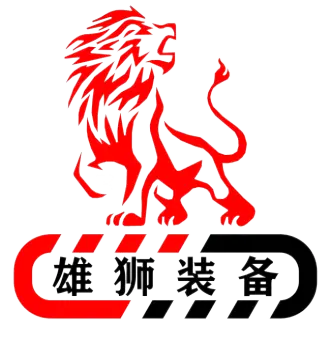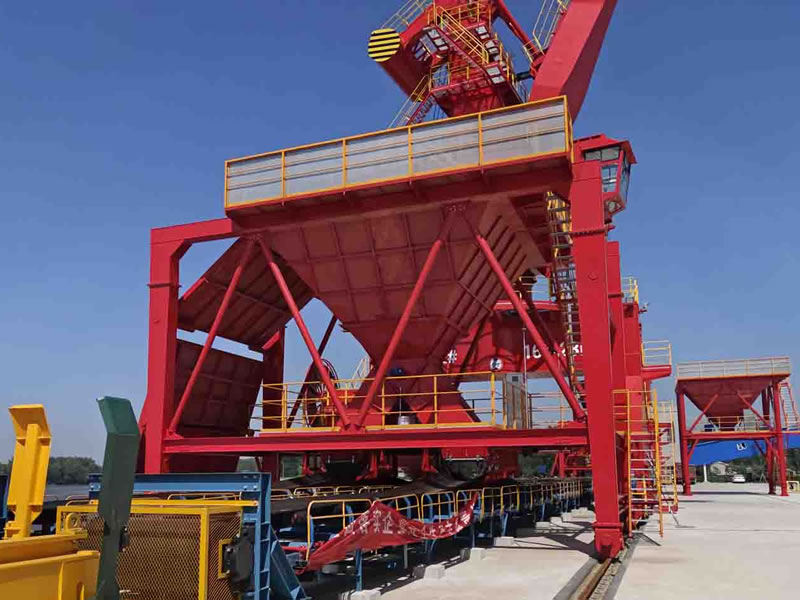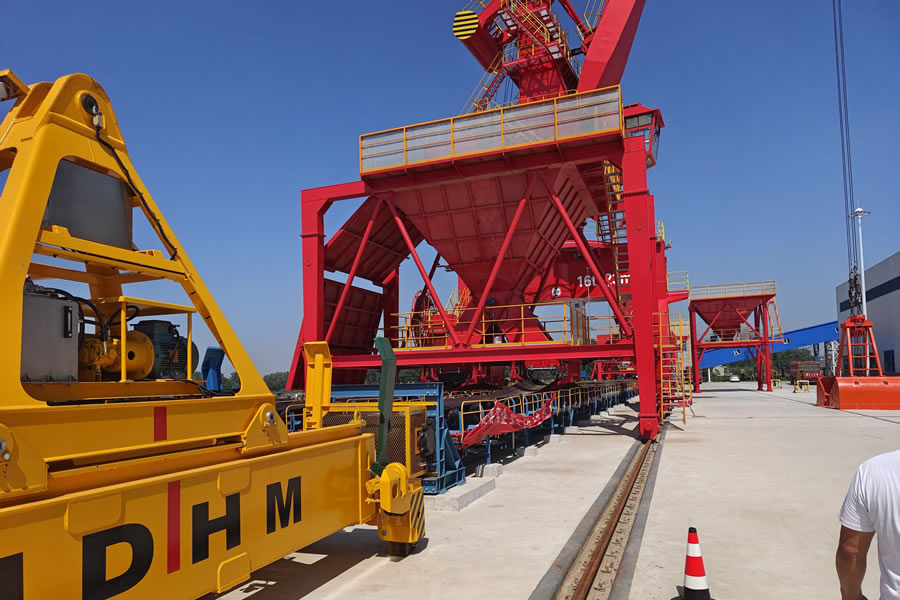
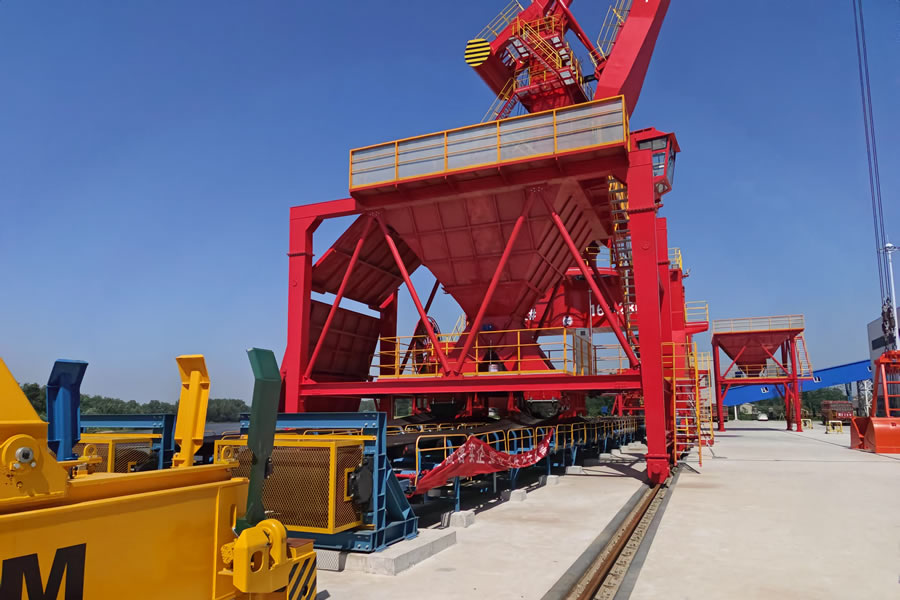
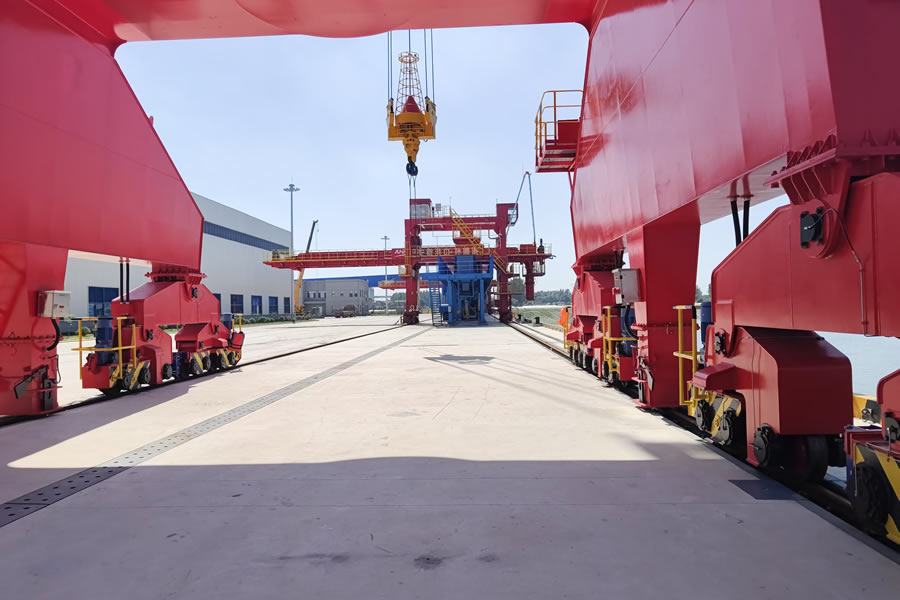
Application
Construction Industry
- Aggregate Transport:
On construction sites, rail-mounted traction hoppers are commonly used for transporting sand and gravel. For example, in concrete batching plants, the hopper can deliver aggregates of various sizes from the stockyard to silos above the mixer. Due to the high demand for aggregates in construction, this equipment enables continuous material supply along fixed tracks, ensuring uninterrupted concrete production. - Cement Handling:
These hoppers are also used to transport cement from storage warehouses to the mixing stations on-site. The rail-guided operation provides controlled movement along defined routes, preventing material spillage and reducing cement dust emissions—helping meet environmental protection standards.
Mining Industry
- Ore Transport:
In mining operations, the rail-mounted traction hopper transports extracted ore from underground or open-pit mines to processing plants or ore stockpiles. It is well-suited to navigate complex terrain and operates stably along mine tunnels or hillside tracks. For large-scale mining sites, its high capacity meets intensive material handling demands and contributes to overall operational efficiency. - Tailings Management:
These hoppers also play a key role in transporting tailings from processing plants to designated tailings storage facilities, reducing environmental contamination around mine sites.
Metallurgical Industry
- Raw Material Supply:
In iron and steel plants, the hoppers deliver raw materials such as iron ore, coke, and limestone from stockpiles to blast furnaces or steel-making furnaces. The system ensures precise delivery along predefined tracks and can bear heavy loads, supporting large-scale, continuous production in the metallurgy sector. - Slag Handling:
Rail-mounted traction hoppers are also used to move slag, such as blast furnace or steel slag, to waste processing or recycling areas for reuse or disposal.
Chemical Industry
- Raw Material Conveyance:
Chemical production often involves the use of various solid raw materials. These hoppers can transport lump, powder, or granular materials while preventing cross-contamination. The rail-guided design ensures raw material purity and quality. - Product Transport:
Used for conveying finished products such as plastic pellets and pigments to packaging stations or warehouses. The hopper operates reliably in complex plant layouts and chemical environments.
Port and Terminal Operations
- Bulk Material Handling:
At ports, rail-mounted traction hoppers are used for loading and unloading bulk materials such as coal, ore, and grain. After unloading from ships, bulk cargo is transported via these hoppers to storage yards or warehouses. Their capacity and stability improve handling efficiency. - Auxiliary Material Transport at Container Terminals:
In container ports, hoppers can also transport auxiliary materials like spare parts and tools for loading equipment, ensuring smooth terminal operations.
Food Processing Industry
- Raw Material Transport:
In food processing plants, these hoppers are used to transport ingredients like grains, sugar, and salt. Their enclosed design (if equipped) helps maintain hygiene standards and prevents contamination. - Finished Product Handling:
They also facilitate the movement of packaged food products—such as biscuits and beverages—to storage or shipping areas, ensuring integrity during internal logistics.
Advantages
Track-Based Operation
- Fixed Route Accuracy:
The hopper operates on predefined tracks, ensuring precise and reliable material delivery. Whether transporting iron ore to a blast furnace in a steel mill or delivering cement to a mixer on a construction site, it adheres to set paths, minimizing spillage and route deviation. - High Alignment Accuracy:
It provides precise docking with unloading points. In chemical production, for instance, raw materials can be delivered directly above a reactor’s inlet, reducing waste and downtime caused by inaccurate unloading.
Strong Load Capacity
- Robust Structure:
Engineered with reinforced hoppers and traction components, the hopper can carry several tons—up to dozens of tons—depending on the application. High-strength materials and structural reinforcements ensure stability under heavy loads. - Versatility for Different Materials:
Capable of transporting bulk, powder, or granular materials, the hopper’s design (with sealing if equipped) prevents leakage and deformation under load, even with heavy or abrasive materials like ore or cement.
Excellent Adaptability
- Terrain Adaptation:
These systems are designed for varied terrains. Whether on a sloped mining surface, multi-level factory floors, or construction sites, they can be installed on appropriately laid tracks to facilitate smooth material flow. - Environmental Resilience:
Designed to function in harsh environments such as humid, salty port areas, dusty mines, or high-temperature metallurgical zones, the hopper maintains stable performance and durability.
Material Handling Performance
- Stable Conveying Speed:
The hopper delivers materials at a consistent pace, which is essential in batching operations. For example, delivering aggregates to a concrete mixer at a controlled rate ensures precise mixing ratios. Speed can be adjusted based on traction force to suit specific operational needs. - Continuous Operation:
Capable of long-duration material transport, the hopper supports continuous production processes. This is especially beneficial in industries like chemicals and metallurgy, where uninterrupted raw material supply is essential.
High Operational Stability
- Reliable Movement:
Running on tracks provides inherent stability, minimizing the risks of derailment or tipping. Even under external disturbances such as vibration or wind, the system maintains a steady course. - Comprehensive Safety Features:
Equipped with limit switches and other protective mechanisms, the system can detect endpoint positions or abnormal conditions and stop operation automatically, preventing accidents like derailment.
Technical Specifications
| Rail-Mounted Traction Hopper | ||
| Hopper Volume | 0.5 m³- 5 m³ | Customizable |
| Material Options | Carbon Steel, Stainless Steel | |
| Track Gauge | 600 mm, 900 mm, 1200 mm, 2000 mm | |
| Rail Specifications | 18kg/m、24kg/m、38kg/m | |
| Traction Types | Wire Rope, Chain Drive, Rack and Pinion | |
| Traction Speed | 0.5 m/s—- 3 m/s | |
| Traction Power | 3 kw- 15 kw | |
| Transport Capacity | 5 m³- 100 m³/h | |
| Conveying Height | 20 m-50m | |
| Conveying Distance | 10-500m | |
